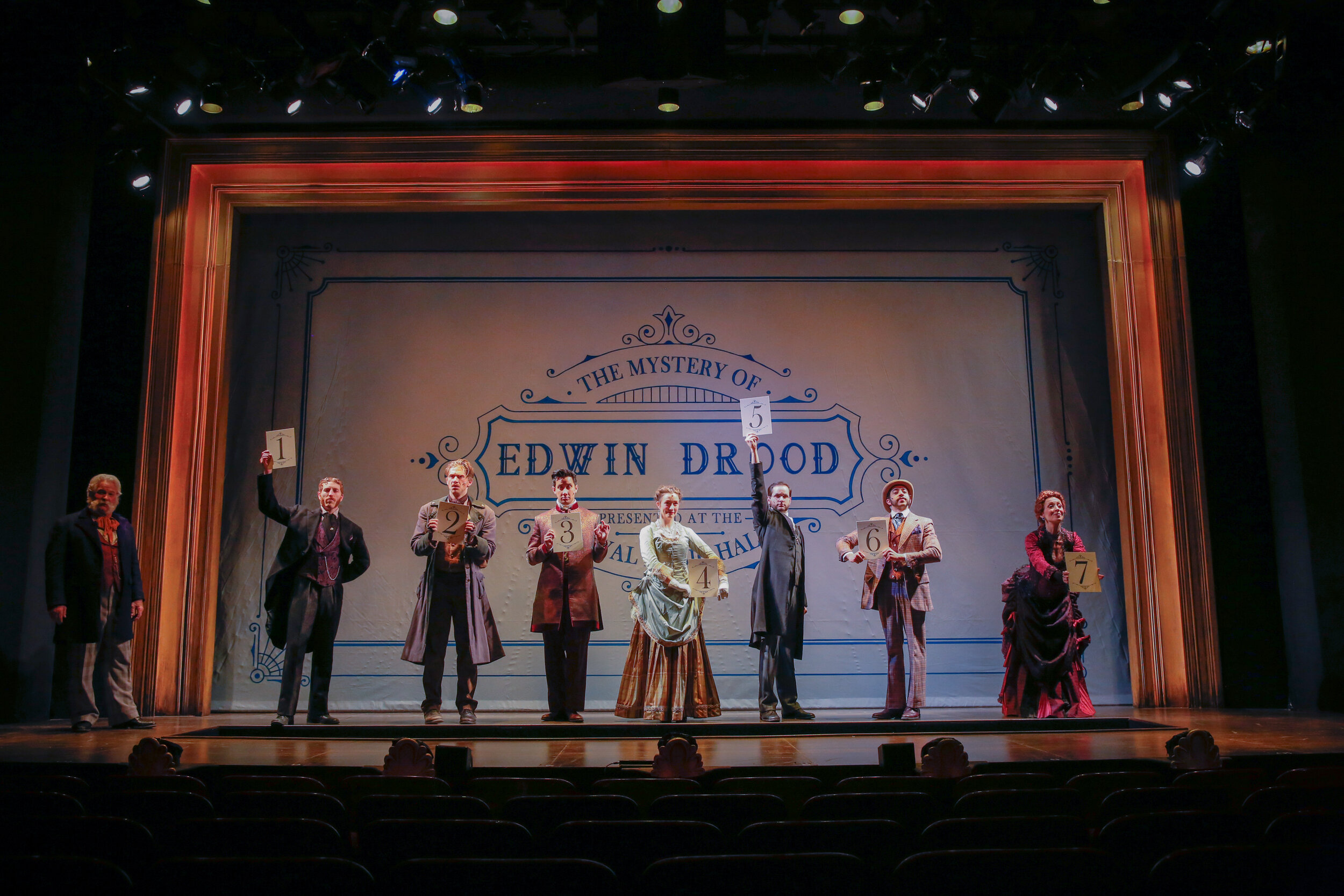My fave pic of the three of us, no competition
In this edition of Squad Pod, it is pleasure beyond describing to post audio of chats with two of my favorite people on this planet! The first chat is with costume designer for Little Shop of Horrors, Jessica Haswell. The second chat is with Brittny Mahan, who was the assistant costume designer on the show.
These two women have been instrumental peers in my time in grad school. We came in at the same time, along with our fellow colleague Toni Sterling (who’s a killer lighting designer!) three years ago. While we formed so many relationships with the rest of our peers, there is certainly something powerful about being running mates from the beginning. I think Jess and Brittny are incredible artists. I’m also blessed to know them as friends as well as colleagues, which has made working together even more of a joy.
Jess and I had actually worked together on a CRT show the previous season (Henry IV: Parts 1 and 2.) We also spent plenty of time together in our little corner of the lab, choosing to share our working space after our first year. If there is one thing that makes my chest tight when I think about the show’s cancelation, it’ the fact that we didn’t get a chance to see Jess’s costumes alive and beautiful, worn by our incredible cast. While her renderings are certainly gorgeous and definitely give you a clear idea on what her design would be, I would be lying if I didn’t also say that I’m still a little sad when thinking about how awesome they were going to be on the body. Like me, this was her MFA Project, so it did sting a little extra for us to have our last piece as grad students stopped before production. Still, chatting with Jess about her process was a joy and delight and I hope the selection of renderings shown here can give you a taste of just how talented she is. Definitely check out her website jessicahaswelldesign.com
Disclaimers, Corrections, Clarifications: As with the other episodes, we are just two artists chatting about our work and life. Anything we say is often based in opinion and our own experience and therefore nothing should be taken as a firm declarative of the “only right” or anything of that sort.
A little blurry, but I really love this picture of us!
Looks for Ya Never Know (Seymour and Do-Op Girls)
The Do-Op Girls, look for Closed for Renovation
Call Back in the Morning and Meek Shall Inherit
Super fun amazing sparkly fabric Jess was looking to use for the look in the rendering directly above
Subsequent to the Events You Just Witnessed
Look 2 for the three principles
Audrey and Orin
Act 2 Beginning Look for three principles
Sominex
Don’t Feed the Plants
Next audio we have is a chat with the indomitable Brittny Mahan, who was acting as Jess’s assistant on this show. She has also designed multiple shows at CRT (Crucible, Mystery of Edwin Drood, and Shakespeare In Love) and she is pretty much a rockstar human on every level. Definitely check out her website as well, you will never be sorry that you worked with this woman www.brittnymahan.com.
Disclaimers, Corrections, Clarifications: Again, we are just chatting about our work and our field. At one point, we do get a little into it about payment and monetary compensation for work in the professional world, and we did make a point to say we don’t get paid hourly. To be clear, assistants are often paid by the hour, we were mostly referencing designer compensation in that moment. Further to that point, we are not necessarily advocating that everything shift to hourly measures for compensation; rather that the level of work and skill that designers bring to the production should be appropriately compensated financially. This is particularly poignant for costume designers especially who have, anecdotally and historically speaking, often received the lowest pay on the creative team.
On this Episode of KP Gaffes: At one point in the recording, I say that a certain amount of time Brittny mentions is “less than a month,” when in fact the time frame she relates is a little over a month. Time is really screwy in grad school, warps the mind I swear.
Fab pic of us at the Prague Quadrennial last year
Since work stopped before we could get pictures of how Brittny’s assistance contributed to build for Little Shop, I wanted to include a couple pictures from another CRT show. This is Mystery of Edwin Drood, for which she was the costume designer
Another shot from CRT’s Mystery of Edwin Drood
Okay, now just standby for the love fest. I’m going to miss seeing these ladies all the time as I have become accustomed. Our industry is very small, so we shall certainly cross paths again. Still, I’m going to miss this loves, you were huge part of a very involved three years. We did it!!
Costume designers abroad!
I had to include this one, the drama is just perfect!
We decided that if for some reason we ever release an album, this is def the cover
My heart to you both, you made these three years amazing!!






















































